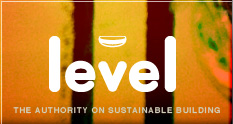Wet Areas
Poor wet area design or installation can compromise safety, comfort and convenience for building users, and lead to significant structural damage.
Quick reference guide for wet area floor finishes
Characteristics and performance of wet area floor finishes.
Acceptable Solution E3/AS1 lists suitable floor finishes for wet areas as:
- waterproof sheet material (such as PVC) with sealed joints and sealed or coved at edges
- ceramic or stone tiles with 6% maximum water absorption and waterproof grouted joints
- a slab-on-grade concrete slab floor with a steel trowel or polished finish.
E3/AS1 makes the comment that other floor finishes may also satisfy performance requirements, but they are outside the scope of the Acceptable Solution. This means that they must be consented as an Alternative Solution.
Cement plaster
- Not damaged by water.
- Doesn’t support bacterial and fungal growth.
- May absorb water if not sealed.
- Slip-resistance when wet depends on surface finish.
- Suitable for areas not normally wet.
- Suitable for splash areas if sealed.
- Suitable for shower floor if has impervious coating system.
Concrete
- Not damaged by water.
- A rough surface may support bacterial and fungal growth unless cleaned regularly.
- Doesn’t allow water to percolate.
- Slip-resistant when wet if has textured surface.
- Suitable for areas not normally wet.
- Suitable for splash areas if steel-trowelled dense finish.
- Suitable for shower floor if steel-trowelled dense finish.
- Installation must include control joints.
Cork
- Not damaged by water if correctly coated.
- Doesn’t support bacterial and fungal growth if correctly coated.
- Doesn’t allow water to percolate if correctly coated.
- Slippery if has a gloss coating.
- Suitable for areas not normally wet.
- Suitable for splash areas if correctly coated.
- Not suitable for shower floor.
- Correct coating is critical.
Linoleum
- Can be damaged by continual wetting.
- Doesn’t support bacterial and fungal growth when dry.
- Allows water to percolate through joints.
- Slippery when wet.
- Suitable for areas not normally wet.
- Not suitable for splash areas.
- Not suitable for shower floor.
- Not recommended for wet areas.
PVC (vinyl)
- Not damaged by water if correctly coated.
- Doesn’t support bacterial and fungal growth.
- Doesn’t allow water to percolate if has welded joints.
- Slip-resistant when wet if has profiled surface.
- Suitable for areas not normally wet.
- Suitable for splash areas.
- Suitable for shower floor if has welded joints.
- Generally requires 2 mm thickness to allow welding of joints.
Rubber
- Not damaged by water if correctly coated.
- Doesn’t support bacterial and fungal growth.
- Doesn’t allow water to percolate if has sealed or welded joints.
- Slip-resistant when wet if has profiled surface.
- Suitable for areas not normally wet.
- Suitable for splash areas.
- Not suitable for shower floor.
Terrazzo
- Not damaged by water.
- Doesn’t support bacterial and fungal growth.
- Doesn’t allow water to percolate.
- Slip-resistant when wet if has textured surface.
- Suitable for areas not normally wet.
- Suitable for splash areas.
- Suitable for shower floor.
- Installation must include control joints.
Tiles – ceramic
- Not damaged by water.
- Doesn’t support bacterial and fungal growth.
- Allows water to percolate – requires waterproof membrane.
- Slip-resistant when wet if has slip-resistant surface.
- Suitable for areas not normally wet.
- Suitable for splash areas – membrane required for wood-based flooring.
- Suitable for shower floor if has waterproof membrane and impervious joints.
- Installation must include control joints on a rigid base.
- Ceramic tiles must have a moisture absorption of no more than 6%.
Tiles – stone and marble
- Not damaged by water.
- Doesn’t support bacterial and fungal growth.
- Allows water to percolate – requires waterproof membrane.
- Slip-resistant when wet if has textured surface.
- Suitable for areas not normally wet.
- Suitable for splash areas – may require sealing.
- Suitable for shower floor if has waterproof membrane and impervious joints – may require sealing.
- Installation must include control joints on a rigid base.
- Stone and marble tiles must have a moisture absorption of no more than 6%.
Timber strip and overlay flooring
- Susceptible to moisture damage.
- Manufacturers of these products typically recommend they not be used in wet areas.
Reconstituted wood boards (particleboard, strand boards)
- Untreated particleboard easily damaged by moisture and not recommended for wet areas.
- Reconstituted wood boards used in wet areas should be treated to H3.1.
- In water-splash areas (around baths and vanities) H3.1 boards must be protected by waterproof sheet material with sealed joints, or a waterproof membrane.
- In shower areas H3.1 boards must be protected with a waterproof membrane system specified for use with timber panel flooring.
Updated: 12 November 2021

